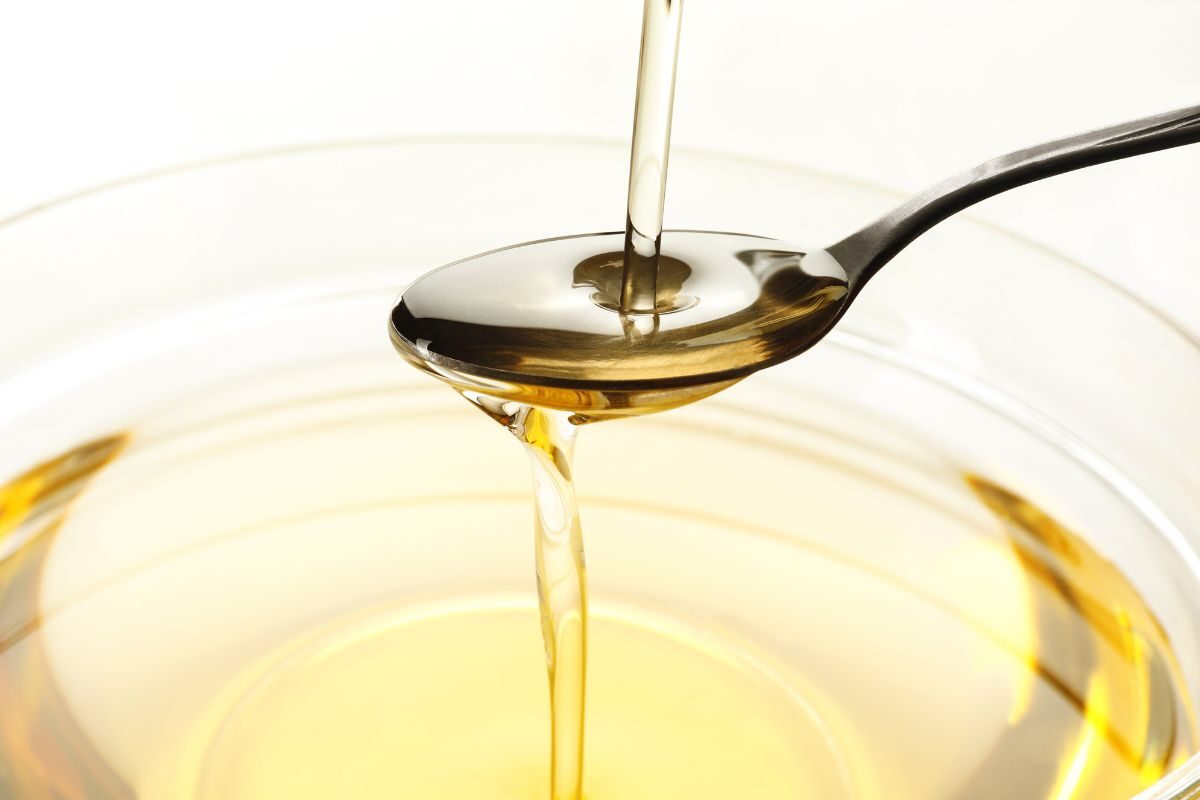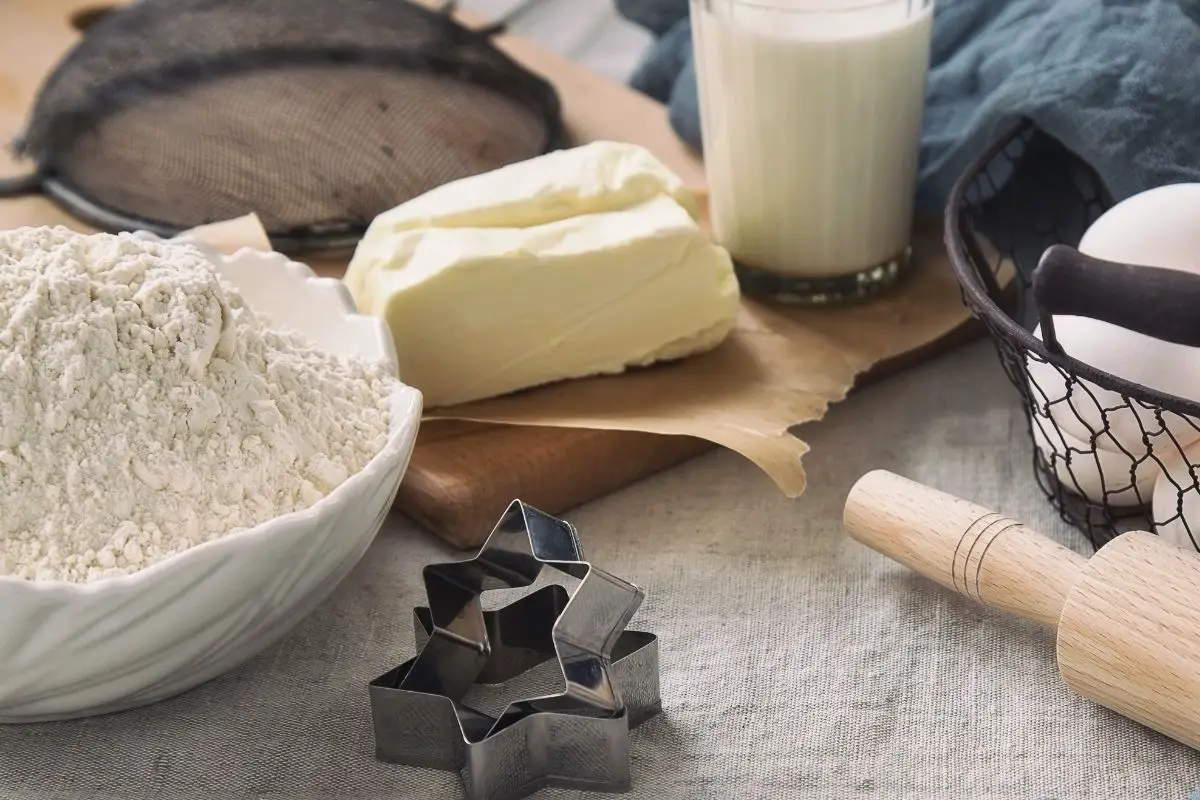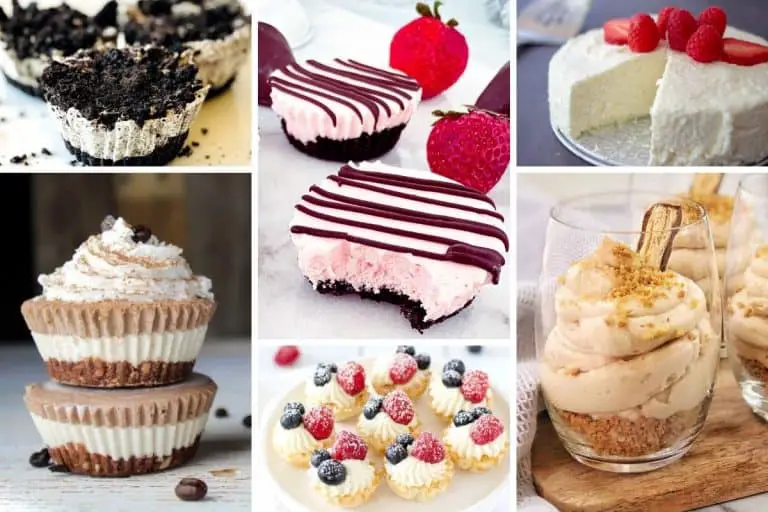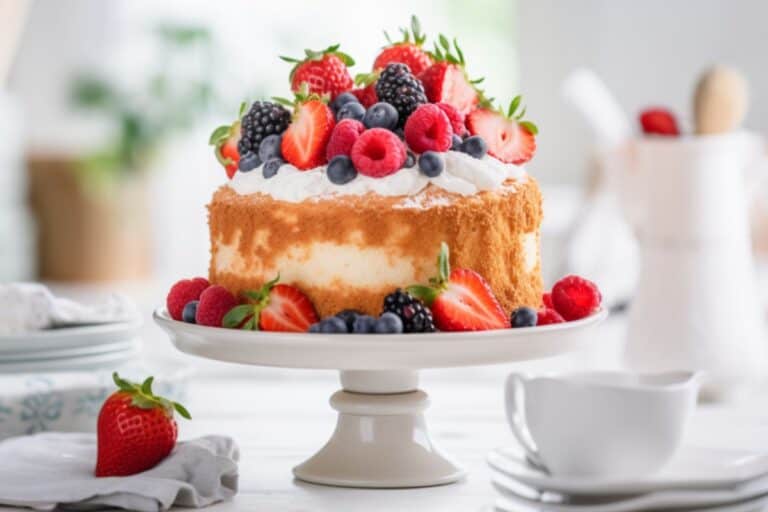What Is Vegetable Shortening?
What Is Vegetable Shortening? – that is the question! Looking at that pie recipe made with a dough that calls for vegetable shortening and wondering what the heck it is exactly? You’re in the right place! Get ready to dive into vegetable shortening as we disclose what it really is and why we use it!
If you make a quick trip to any grocery store, chances are one of the first things you’ll spot in the baking aisle will be cans of vegetable shortening. In fact, you may already have a tub in your pantry but aren’t really sure what it is, don’t worry; we got you!
Shortening is a must-have in the kitchen for many bakers — both amateurs and professionals — and for good reason. It’s great for giving cookies and cakes an airy texture, but truth be told, most people don’t even know what it is exactly. Its processing sounds complicated (hydroge-what?), it’s too cheap to be true, and there are even claims that it’s terrible for your health.
We want to know what’s truly behind this vegetable fat, and whether all the rumors about it are true or just simple baking myths. So without further ado, let’s find out what is vegetable shortening and whether should we be using it!?
What Is Vegetable Shortening Made Of
In short (pun intended), vegetable shortening is a vegetable oil that has been chemically modified from a liquid to a semi-solid state. When “hydrogenated” — that is the proper name for the chemical process — the oil becomes kind of similar to butter in texture, color, and appearance but without animal protiens and with different properties.
As for the type of oil it’s derived from, shortening was originally made from cottonseed oil. However, nowadays it is mainly made from soybean oil, palm oil, and even coconut oil.
What Type Of Fat Is Vegetable Shortening
In a nutshell, vegetable shortening is a type of all-vegetable fat made from fully hydrogenated oil. It’s vegan (shoutout to our vegan readers!), has a long shelf life — about 2 years if unopened —, and is thought to be much better for your health, by some, than it used to be at least. Here’s some context:
You see, in the past, this butter substitute was made from partially hydrogenated oils, commonly known as trans-fat. As you may know, trans-fats are one of the worst macronutrients we can consume, increasing the risk of coronary heart disease even at low levels of consumption. Many scientific studies were conducted on the matter (like this one right here), and at one point, hiding the dangers of partially hydrogenated oils was impossible.
That’s how in 2018, the FDA (Food & Drug Administration) approved a ban on trans-fat, which went into effect on New Year’s Day 2021. Meaning that from that date, shortenings in the U.S. do not contain partially hydrogenated oils, but fully hydrogenated oils — and that’s a whole different story that we’ll discuss below.

Is Shortening Healthy?
Just the fact that shortening is heavily processed shows that it’s something that really isn’t that great for use in the grand scheme of things. Can it kill you? Well, in the past, it might have, but nowadays, that’s up in the air.
While there are still not enough studies that determine that fully hydrogenated oils are 100% safe to consume, they don’t contain the trans-fat that makes arteries go haywire, so, again, some would argue vegetable shorting is safer to consume. Long story short, it seems like shortening is a little less bad for your health than it was a couple of years ago. But – what do we know? We’re not doctors and can’t make that call.
Anywho, back to the main question: is shortening healthy? Well, it’s super-processed, very high in calories, and has zero nutritional value, so in our opinion, it’s not particularly healthy, but it does make one heck of a flaky pie crust. Like with most iffy products, moderation, moderation… and you guessed it, moderation is our motto!
What Does Vegetable Shortening Taste Like?
We already know what vegetable shortening is made of, but for those of you who are not from the States or have not tried it yet, you are probably wondering what it tastes like. We would like to say that it has a wonderful flavor with intricate notes, but to be honest, It doesn’t taste like anything. If you were to taste a spoonful, all you’d get is an oily coating in your mouth. It also doesn’t have a distinctive smell, unlike lard or butter.
That’s a good thing for baked goods that don’t need strong fatty flavors, but for those that require rich, deep flavors, it can be a real bummer.
P.S: If you want the features that vegetable shortening gives to pastries (more on that later) but miss the richness of butter, you can buy butter-flavored shortening. It doesn’t taste identical to the OG stuff, but it can certainly do the job.
What Is Vegetable Shortening Used For
Vegetable shortening is well, literally used for shortening. In all seriousness, the reason it is called shortening is because it is used to shorten dough, i.e. to increase the proportion of fat to flour.
What you want is for the dough not to be elastic, but to have short fibers and result in a crumbly, light, or even flaky dough — like pie crusts. Its counterpart would be elastic “long” doughs, such as pizza dough.
Because vegetable shortening is 100% fat, it is also used to help baked goods hold their shape and rise better during baking. Beyond pie dough and biscuits, you may find that vegetable shortening is called for in cookie, cake, and pastry recipes, especially ones that we consider vintage. Some may use it as a substitute for butter or oil, to grease pans, or just for general cooking.

When to Use Shortening
If you want to bake pie crusts, hand pies, powder biscuits, and of course, shortbread, that’s when you should use shortening. Unlike butter, it has a high melting point, so it won’t melt as you work the dough. It will make the baked good hold its shape in the oven, stabilize frostings, and it can also add some extra lightness to cookies and cakes — if that’s what you’re looking for.
Some people use shortening when a recipe calls for dough with no fatty flavors, or when it calls for butter, but they don’t want the taste that goes with it. Yep, believe it or not, there are folks out there who don’t like buttery desserts — we don’t judge here!
Shortening can also be a lifesaver if you need to make a baked good, but butter falls a little out of your budget. It’s cheaper, more convenient, and can often save the day.
However, if you don’t want to use it either because you don’t have it on hand or because it’s just not your cup of tea, let’s look at what to use instead of vegetable shortening.
What Can Be Used Instead of Shortening?
Shortening is the new lard — and you can always go back to basics. Lard is 100% fat, just like shortening, and if you manage to get high-quality rendered lard, you’ll have a flavor-neutral alternative that works just as well.
You can also always go for the good ‘ol butter, but keep in mind that it’s not 100% fat, more like 80% fat. Your baked goods won’t come out as crumbly, but if you use 1 cup of butter + 2 tablespoons for every cup of shortening, you’ll have better results.
Those two are the best and most common alternatives to shortening, but if you want to try new things, you can use vegan butter, margarine, coconut oil, or even ghee if you don’t mind an extra buttery flavor.
Is Crisco® the Same as Shortening?
Crisco® is not only the same as shortening — Crisco® is THE ultimate shortening. In fact, Crisco® is short for “Crystalized Cottonseed Oil“, the first shortening made entirely from vegetable oil. It was introduced by Procter & Gamble in 1911, and since then, it has become the most popular shortening brand. It can be found in almost every pantry in America!
Fun-fact: If you’ve seen Fight Club, you know the basic ingredients for making soap, one of them being fat — any kind of fat. Originally, both Procter & Gamble and the chemists they hired envisioned using vegetable shortening as a raw material for making soap to replace animal fat. They wanted to harden oils to achieve that goal — and they succeeded —, but along the way, they also made sure it could be used in the food industry.
Final Thoughts
Whether you are team butter or team shortening, there is no doubt that shortening can be very useful in the world of baking. Its qualities don’t fly under the radar, and now that we know what’s really behind it, we also understand how it works.
Essentially, vegetable shortening is some type of vegetable oil — be it soybean, palm, or cottonseed — that, through chemical processes, becomes a semi-solid fat at room temperature. It’s pure, tasteless, and odorless fat that makes baked goods light and crumbly, and the best part? It’s less harmful to your health — than it used to be.
Now that you know what is vegetable shortening, what it’s made of, and how you can use it, all that’s left is to decide if it’s the right fat for you!







